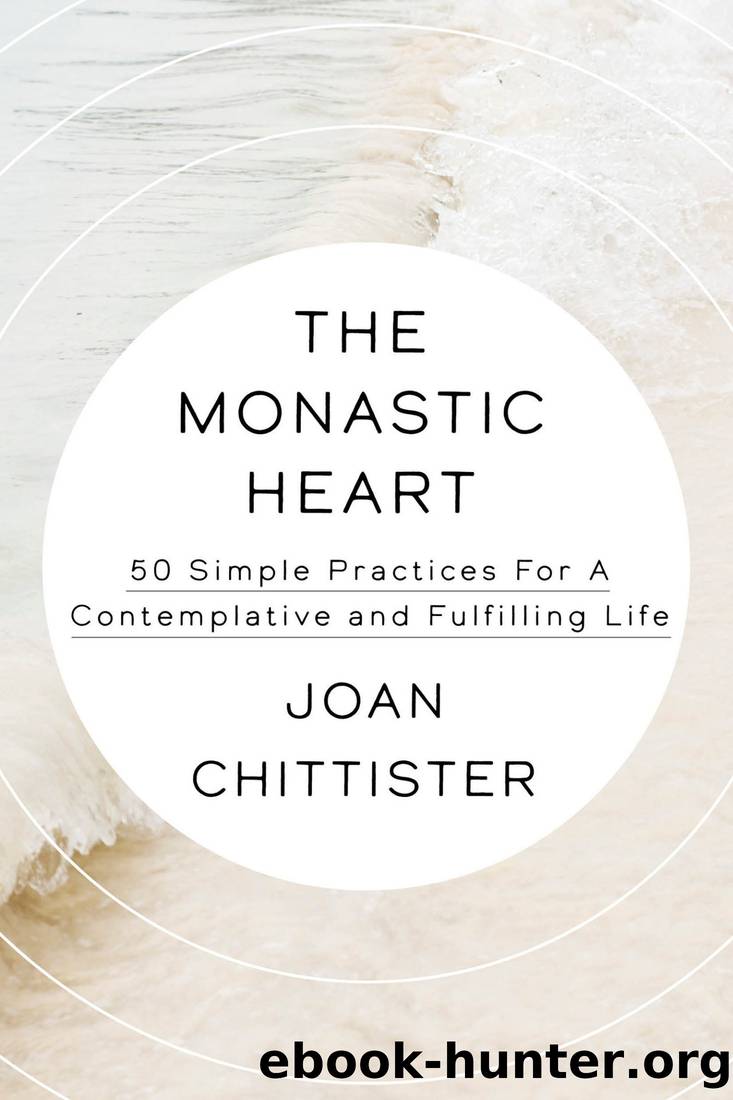The Monastic Heart by Joan Chittister

Author:Joan Chittister [Chittister, Joan]
Language: eng
Format: epub
Publisher: The Crown Publishing Group
Published: 2021-09-21T00:00:00+00:00
As science identifies the relationship between an undercurrent of holy gratitude and Lauds for us, it has also demonstrated the need for holy rest in our lives. If we are really to develop the spirituality of thanksgiving to which Vespers leads us, we need the rest that enables us to go on working.
Holy leisure, Sabbath time, is the contemplative call to rest in Godâs care and at the same time to do our part to care for the world.
I have noticed that when I entitle one of my lectures âThe Place of Leisure in the Monastic Life,â heads turn. What leisure? âI never heard of leisure in religious life,â a woman told me as I walked away from the lectern. âThatâs why I didnât enter,â she went on. âI loved everything I knew about the sisters, but I also knew that Iâd never make it if all they do is work all the time.â
I get the impression that there is another serious misconception about monastic life abroad in the land. So, we need to be direct about this question: Exactly what is the relationship of work to leisure in the Rule of Benedict? Or perhaps an even better way to ask the question is this: Is monastic life nothing but work?
Consider for a moment the amount of time given to each monastic in the daily schedule of the sixth century: In the Rule of Benedict, about four hours a day are allotted for prayer. In fact, that schedule was still a common feature of monastic life when I myself entered the monastery. After the liturgical reform of the 1950s and 1960s, however, the minor Liturgical Hours were either eliminated or condensed to conform to the exigencies of modern life. That change was a good one. It put an end to âgetting prayer inâ and allowed monasteries the time to give each part of the Divine Office the kind of serious reflection that stretches the soul and so makes every act of life a prayer.
Work is allotted six to nine hours a day, depending on the season and the amount of planting or harvesting to be done.
Finally, reading, study, reflection, and lectioâall private activitiesâare scheduled for three and a half hours daily at a minimum. Which leaves at least three hours for holy leisureâfor development activities and personal growth.
Reading, study, reflection, and lectio are essential elements of a contemplative life. In the mind of Benedict, life is not only lived by working hard and falling into bed facedown-exhausted every night. In fact, his schedules prove that holy leisureâthe kind of leisure that settles and shapes the soulâis as much an essential part of Benedictine spirituality as work is. The daily schedule is clear: The monastics work about six to nine hours a day; their prayer, reading, study, reflection, and lectio account for about the same amount of time.
Clearly, Benedictine life is not just about manual labor and saying prayers together. It is also about immersion in thought, consideration of life, an attempt to grow personally and well.
Download
This site does not store any files on its server. We only index and link to content provided by other sites. Please contact the content providers to delete copyright contents if any and email us, we'll remove relevant links or contents immediately.
The Lost Art of Listening by Michael P. Nichols(7165)
Why I Am Not A Calvinist by Dr. Peter S. Ruckman(4047)
The Rosicrucians by Christopher McIntosh(3373)
Wicca: a guide for the solitary practitioner by Scott Cunningham(3044)
Signature in the Cell: DNA and the Evidence for Intelligent Design by Stephen C. Meyer(2879)
Real Sex by Lauren F. Winner(2868)
The Holy Spirit by Billy Graham(2777)
To Light a Sacred Flame by Silver RavenWolf(2678)
The End of Faith by Sam Harris(2636)
The Gnostic Gospels by Pagels Elaine(2399)
Waking Up by Sam Harris(2331)
Nine Parts of Desire by Geraldine Brooks(2281)
Jesus by Paul Johnson(2229)
Devil, The by Almond Philip C(2206)
The God delusion by Richard Dawkins(2190)
Heavens on Earth by Michael Shermer(2189)
Kundalini by Gopi Krishna(2093)
Chosen by God by R. C. Sproul(2055)
The Nature of Consciousness by Rupert Spira(1982)
